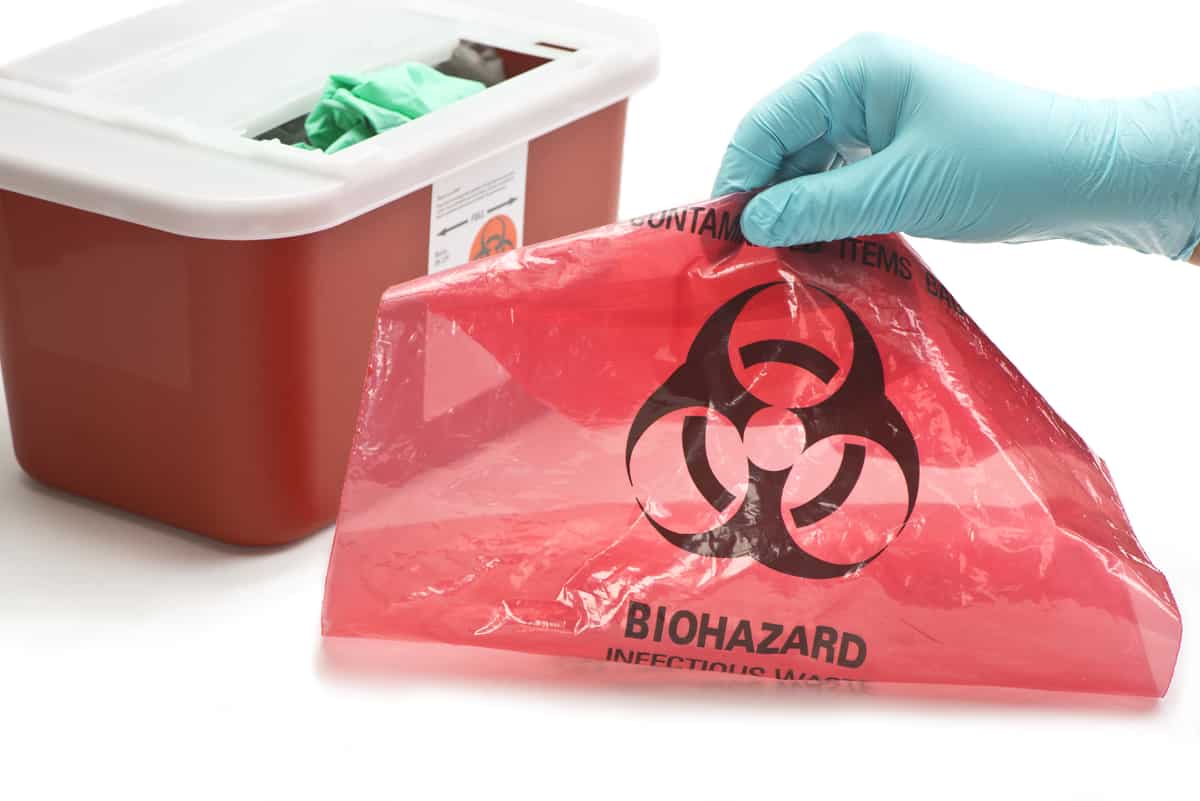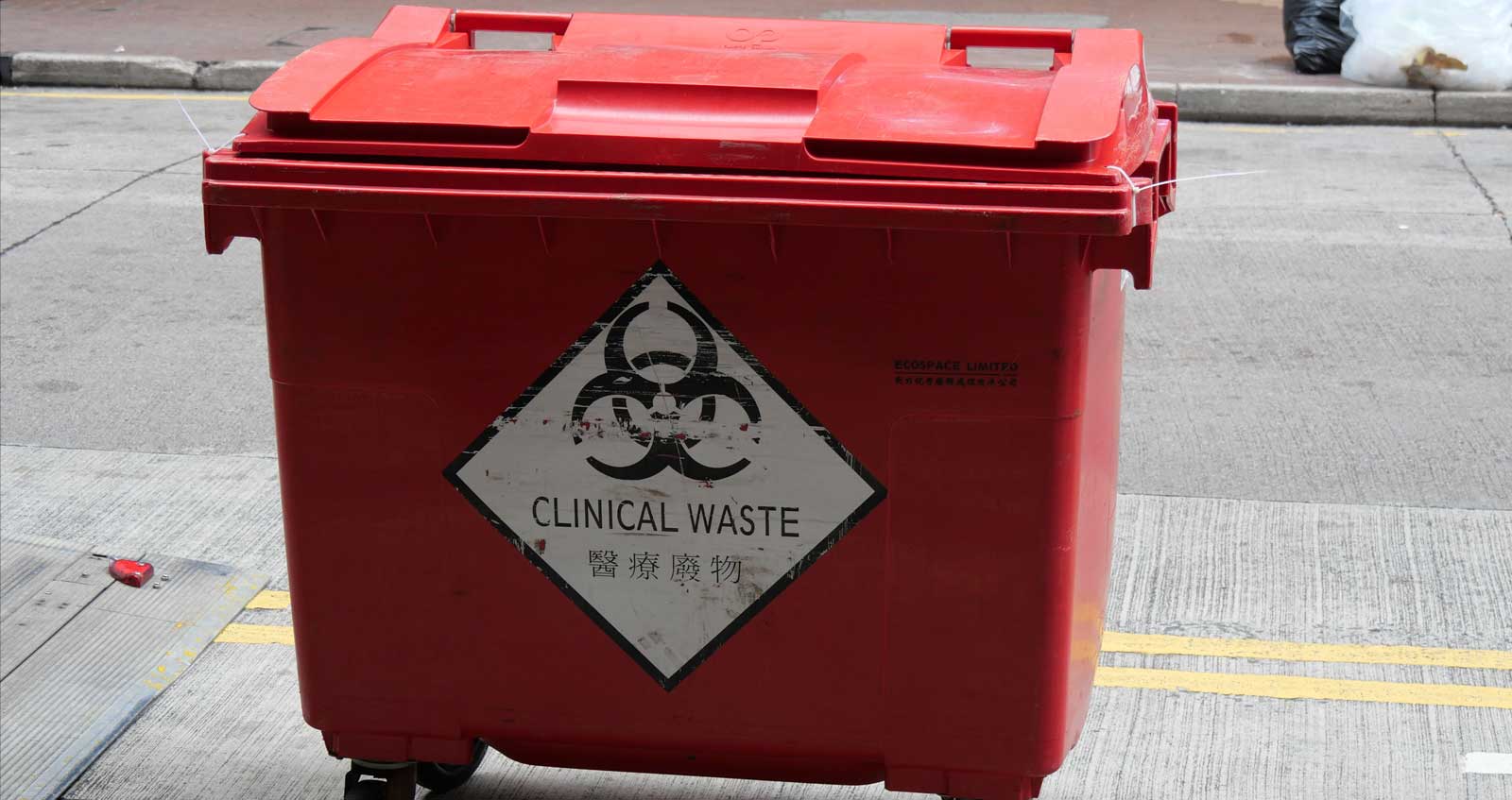Your Trusted Partner: Medical Waste Removal Services Tailored to Your Requirements
Your Trusted Partner: Medical Waste Removal Services Tailored to Your Requirements
Blog Article
Stay Ahead of Laws: Professional Suggestions on Medical Garbage Disposal
In a world where the medical care market is continuously developing, it is essential for clinical centers to stay in advance of guidelines when it comes to the proper disposal of clinical waste. From comprehending the different groups of medical waste to applying the ideal collection and segregation approaches, this discussion will certainly supply actionable pointers and useful insights to assist facilities remain in advance of policies in the ever-changing landscape of clinical waste disposal.
Comprehending Clinical Waste Categories
Recognizing clinical waste classifications is essential for proper disposal and administration in health care facilities. Medical waste describes any waste created by healthcare activities that might pose a danger to public health or the atmosphere. It is crucial to categorize clinical waste accurately to ensure its risk-free handling, treatment, transportation, and disposal.
There are several classifications of clinical waste that medical care facilities need to be aware of. One of the most usual categories include contagious waste, pathological waste, sharps waste, pharmaceutical waste, and chemical waste. Each group has specific guidelines and guidelines for its correct monitoring and disposal.
Transmittable waste consists of products infected with blood or various other bodily fluids, such as gloves, gowns, and lab cultures. Pathological waste describes human cells, body organs, or body components that call for special delivery and disposal. Sharps waste consists of made use of needles, syringes, and various other sharp objects that can cause injury and transmit infections. Pharmaceutical waste comprises expired, unused, or contaminated drugs that need careful handling and disposal. Finally, chemical waste includes solvents, disinfectants, and other chemical compounds used in healthcare facilities.
Remaining Up-To-Date With Regulatory Modifications
Staying current with regulatory adjustments is crucial for medical care centers to make sure compliance and proper monitoring of clinical waste disposal. medical waste removal service. With laws frequently advancing, it is necessary for health care facilities to remain updated to avoid fines, fines, and potential injury to the atmosphere and public health
To remain ahead of governing modifications, healthcare centers ought to develop a system for tracking and monitoring updates. This can be done by subscribing to governing e-newsletters, attending meetings and workshops, and proactively joining industry associations. In addition, facilities should assign a team member or group accountable for remaining informed and sharing information to pertinent stakeholders.
Regular interaction with regulatory companies is additionally essential. Medical care facilities need to establish partnerships with local, state, and government agencies to guarantee they recognize any kind of modifications in regulations that may influence their waste administration practices. This can be done with normal conferences, participation in public remark durations, and proactive interaction with governing agencies.
Additionally, medical care facilities should think about partnering with waste administration business that specialize in clinical waste disposal (medical waste disposal services with WasteX). These business are usually well-versed in the most up to date laws and can give advice and support to guarantee compliance
Carrying Out Correct Collection and Partition Approaches
To effectively manage medical waste disposal, healthcare facilities must establish proper collection and segregation methods according to regulatory standards. Implementing these approaches ensures the secure handling and disposal of possibly unsafe products, secures the atmosphere, and lessens the danger of injuries and infections to health care workers and the general public.
Proper collection and segregation approaches entail using marked containers and identifying systems. Medical care facilities ought to supply clearly identified containers for different types of medical waste, such as sharps, transmittable waste, pharmaceutical waste, and non-hazardous you could check here waste. These containers need to be color-coded and plainly marked to avoid complication and promote easy recognition.
In addition, health care facilities need to educate their staff on the correct treatments for gathering and segregating clinical waste. This includes educating them on the various sorts of waste, the appropriate containers to make use of, and the value of complying with guidelines and guidelines. Routine training sessions and refresher training courses ought to be conducted to make certain that team member stay up-to-date on finest methods.
Additionally, medical care facilities need to establish a system for normal collection and disposal of medical waste. This might include partnering with qualified waste administration firms that focus on clinical waste disposal. These business will guarantee that the accumulated waste is delivered and gotten rid of in conformity with regulatory needs.
Choosing the Right Disposal Techniques
Incineration is one of the most efficient and typical techniques for disposing of certain types of medical waste, such as pathological waste and sharps. It involves the controlled combustion of waste at high temperatures, decreasing it to ash. Nevertheless, incineration can release damaging contaminants into the air and contribute to air pollution.

Chemical therapy entails the use of chemicals to sanitize and counteract the waste. Microwave treatment uses microwave energy to heat and disinfect the waste.
Guaranteeing Compliance With Paperwork and Training
After very carefully taking into consideration the appropriate disposal methods for clinical waste, medical care centers have to ensure conformity with laws and decrease ecological influence by applying efficient paperwork and training procedures. This step is essential in maintaining a lasting and secure atmosphere for both health care workers and the public.

Training is equally vital in guaranteeing conformity with laws. Healthcare workers that take care of medical waste ought to get appropriate training on waste segregation, managing, and disposal treatments. This training needs to cover topics such as the proper use individual safety tools, recognition of various types of waste, and the appropriate disposal techniques for each and every i loved this waste group. By giving comprehensive training, medical care centers can encourage their staff to make informed decisions and reduce the risk of incorrect waste disposal.
Verdict
To conclude, remaining ahead of policies in medical garbage disposal is crucial for medical care centers. medical waste removal. Recognizing the various classifications of medical waste, staying upgraded with regulative changes, implementing correct collection and partition techniques, choosing the ideal disposal techniques, and guaranteeing compliance via paperwork and training are all important actions. By complying with these guidelines, medical care organizations can effectively dispose and take care of of medical waste in a secure and accountable manner
From recognizing the different groups of medical waste to implementing the ideal collection and segregation approaches, this discussion will certainly supply useful understandings and actionable tips to assist facilities stay in advance of regulations in the ever-changing landscape of clinical waste disposal. - medical waste disposal services with WasteX
The most common categories include infectious waste, pathological waste, sharps waste, pharmaceutical waste, and chemical waste. Medical care centers need to provide clearly identified containers for different types of clinical waste, such as sharps, transmittable waste, pharmaceutical waste, and non-hazardous waste. Healthcare centers should develop a detailed system to videotape and track all facets of clinical waste disposal, including types of waste generated, quantities, and disposal techniques utilized. Health care workers who take care of clinical waste ought to receive appropriate training on waste partition, handling, and disposal treatments.
Report this page